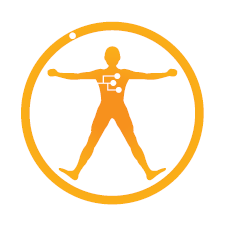
The following four people were awarded the 2019 IEA/Kingfar Award:
Gilbert J. Huber
- de Carvalho, P. V. R., Righi, A. W., Huber, G. J., Lemos, C. D. F., Jatoba, A., & Gomes, J. O. (2018). Reflections on work as done (WAD) and work as imagined (WAI) in an emergency response organization: A study on firefighters training exercises. Applied ergonomics, 68, 28-41.
Liuxing Tsao
- Tsao, L., & Ma, L. (2016). Using subject-specific three-dimensional (3D) anthropometry data in digital human modelling: case study in hand motion simulation. Ergonomics, 59(11), 1526-1539.
- Tsao, L., Chang, J., & Ma, L. (2017). Fatigue of Chinese railway employees and its influential factors: structural equation modelling. Applied ergonomics, 62, 131-141.
- Tsao, L., Li, L., & Ma, L. (2018). Human work and status evaluation based on wearable sensors in human factors and ergonomics: a review. IEEE transactions on human-machine systems, 49(1), 72-84.
Mengli Yu
- Yu, M., Zhou, R., Wang, H., & Zhao, W. (2019). An evaluation for VR glasses system user experience: The influence factors of interactive operation and motion sickness. Applied ergonomics, 74, 206-213.
Rodrigo Arcuri Marques Pereira
- Jatobá, A., Bellas, H. C., Koster, I., Arcuri, R., Vidal, M. C. R., & de Carvalho, P. V. R. (2018). Patient visits in poorly developed territories: a case study with community health workers. Cognition, Technology & Work, 20(1), 125-152.
- Li, R. C., Pereira, R. A. M., Jatobá, A., Vidal, M. C. R., de Carvalho, P. V. R., Grindrod, K., & Burns, C. (2019, November). Information Technology Systems at the sharp end of medication therapy management. In Proceedings of the Human Factors and Ergonomics Society Annual Meeting (Vol. 63, No. 1, pp. 698-702). Sage CA: Los Angeles, CA: SAGE Publications.
- Arcuri, R., Bulhões, B., Jatobá, A., Bellas, H. C., Koster, I., d’Avila, A. L., … & de Carvalho, P. V. R. (2020). Gatekeeper family doctors operating a decentralized referral prioritization system: Uncovering improvements in system resilience through a grounded-based approach. Safety Science, 121, 177-190.
Application for the IEA/Kingfar Award
Purpose
The IEA/Kingfar Award is given annually to honor persons who have made high-quality ergonomics and human factors (HF/E) research achievements that address issues typical of industrially developing countries (IDCs). The purpose of the award is to encourage a deserving person to further explore original research and applications on HF/E issues typical of IDCs, thereby potentially improving the well-being of people in IDCs.
The IEA/Kingfar Award is given annually to honor persons who have made high-quality ergonomics and human factors (HF/E) research achievements that address issues typical of industrially developing countries (IDCs). The purpose of the award is to encourage a deserving person to further explore original research and applications on HF/E issues typical of IDCs, thereby potentially improving the well-being of people in IDCs.
Basic Structure
- Honor eligible nominees who have made high-quality ergonomics and human factors (HF/E) research achievements that address issues typical of industrially developing countries (IDCs). Nominees can be from any country, including both IDCs and developed countries.
- Honor up to eight winners each year.
- Award each winner a prize of $1,000 USD.
Eligibility
- The submitted research achievement should address HF/E issues typical of IDCs, which is proven by submitted evidentiary documents. All areas of HF/E are acceptable.
- The submitted research achievement should have been accomplished by the nominated student prior to graduation.
- The nominee is a registered PhD student or a PhD candidate. Newly graduated ex-students who have been awarded a PhD within the past year are acceptable.
- The nominee must have made a major contribution to the submitted research achievement, preferably the first or corresponding author of evidentiary technical document(s) – See Nomination Process shown below.
- The nominee is a member of an IEA Federated or Affiliated society, or a self-recommending individual whom the IEA Federated or Affiliated society agrees to nominate. To enable applications, it is suggested that Federated and Affiliated societies promote ways to associate students to enable applications.
Note: The IEA Award Committee may examine the eligibility and decline the application before detailed technical evaluation.
Nomination Process
- The nomination must be made to IEA through an IEA Federated or Affiliated society.
- Combine the following evidentiary documents into a single pdf file and send the file to the Chair of Awards Standing Committee (PastPres@iea.cc) and Vice President, Secretary General (VPSG@iea.cc), and Secretariat (secretariat@iea.cc) by June 30, each year. Note: for 2020, the application deadline has been extended to 31 December 2020.
Required Evidentiary Documents
- A letter of nomination from the nominating society that justifies the quality of the nominee’s research. Relevance to HF/E issues in IDCs should be clearly stated in a specific paragraph. The quality of the submitted research achievement should be clearly mentioned;
- A full copy of journal/conference paper(s), and/or design(s) with explanations, and/or project report(s);
- The nominee’s curriculum vitae or résumé, which must include references of background and/or present training in the HF/E domain;
- A scan copy of the nominee’s ID (for current students) or graduation certificate (for those who are newly graduated);
- A letter of recommendation from the nominee’s academic adviser using institution’s letterhead, which justifies the HF/E contribution, certifies the nominee’s contribution, and describes the nominees’s status at the time of submitting the nomination. The letter may encompass other features judged relevant to the decision of nomination.
Note: The official language is English.